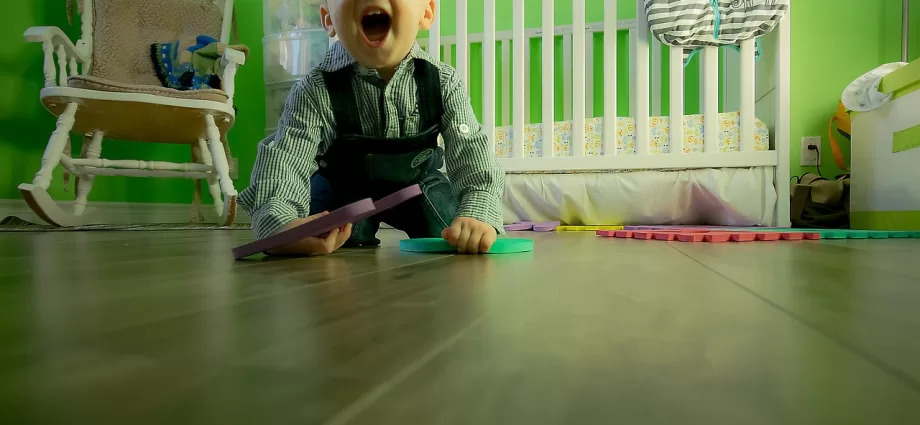A lot of keeping your child safe is just using common sense. In our child safety guide, we run through simple things to remember to keep your child safe.
Every child is unique, and each family functions differently. In spite of that, there are certain rules of child safety which transcend every culture, religion, age, philosophy, diet, lifestyle and political persuasion.
We have put together a few suggestions for newbie and not-so-newbie parents to help keep their children safe.
Common Sense Child Safety Tips
Child Safety Rule #1: If it’s there, they will take it.
This rule applies to any age. If you leave your cell phone within reach, your toddler will take it and likely stick it in their mouth. A child under three years will mistakenly (and randomly) dial 911 at least once. Emergency services start charging you after the third instance of toddler-crank calling. A teen will also be happy to temporarily abscond with your cell phone, if only to change your ringer to a Justin Bieber song. Keep your cell phone on your person at all times. In a pocket is best.
Child Safety Rule #2: If it’s important, they will damage it.
This rule is closely related to the above rule. If you leave an important document, project or book out, your child will damage it in some way. Your co-worker’s book you borrowed will acquire lovely crayon design inside, and your contracts will end up scrunched or torn. An important project will have food or drink smeared on it. Essential documents or books should be kept in a locked filing cabinet.
Child Safety Rule #3: If it’s there, they will climb it.
This rule generally applies to children who do not have any fear of injury: toddlers, sugar-fueled kids recently returned from a grandparent’s visit, hyper children just dropped off after a visit with an irresponsible aunt. Bookcases become ladders, stairs become slides or ladders and curtains become rope-climbing practice. Anchor bookcases to the wall with L-brackets and keep a close eye on your little climber. Install wall-mounted safety gates at the top and bottom of stairways. If they are particularly hyper, take them out to the park to let off steam. Then they can run themselves into an exhausted frenzy and fall asleep as soon as they hit the pillow.
Child Safety Rule #4: If they can get into it, they will.
This is one for the younger children. If there is a cabinet, cupboard, closet or room they can get into, they will. If you do not install a child safety latch on the toilet, you will find them playing in the water (or worse). If there is no child lock on the fridge, you will find the contents on the floor. If none of the drawers or cupboards in the kitchen have latches, you will find all the labels peeled off the canned goods. If there is no lock on the multimedia cabinet, you will find cereal in your electronics. If there is no wall-mounted safety gate barring entry to your office or workshop, well you know what will happen.
Child Safety Rule #5: If it’s going around, they will catch it.
This is another rule that applies to any age. Children are only as hygienic as you teach them and young children are only as clean as you keep them. Kids at daycare centers, playgroups, kinder gyms, playgrounds and any other gathering place will share their bugs. It is simply inevitable. Teaching your children to wash their hands a lot throughout the day will set a good foundation as they get older. Washing hands often is the secret to stopping viruses before they take hold. But they will still get sick at least occasionally.
Child Safety Rule #6: Children are vulnerable.
Ok, this is a big one. Infants and young children are physically, very vulnerable. Their bodies cannot control their core temperature and therefore you need to keep a close eye on it during extreme weather. On hot days keep them out of the direct sun, in cool clothing, well hydrated with water, slathered in sunscreen and not overly active. Place your hand on the back of the child’s neck to do frequent body temperature tests. If it feels hot, cool the child down immediately by giving a quick sponge bath, removing clothing or taking them to a cool locale.
In cold weather a good rule of thumb is to always apply one additional layer of clothing to the child than what you are wearing. If you are wearing three layers, the child should be wearing four. That applies to feet and hands as well. Double or triple the layers of socks on the feet, even adding a pair to the hands under a set of mittens is a good idea. Always cover the child’s head with a warm hat.
Children are mentally vulnerable as well. They learn everything through their environment. Begin teaching traffic safety at an early age so it becomes easy and normal as they get older. Teach the child the importance of staying safe and in a group on outings. Kids do not always realize the inherent danger of bodies of water like a full bathtub, pond, pool, stream, river, ocean etc. Teach them water safety like the buddy system (but incorporate an adult buddy as the rule), a life-jacket rule, and never leave a child in a bathtub unattended.
Just Use Common Sense
Nothing is more important than the safety of a child, and no thing you ever have in your possession will ever be as valuable as a child. Keep these common sense rules of thumb in mind to help keep your child safe.
